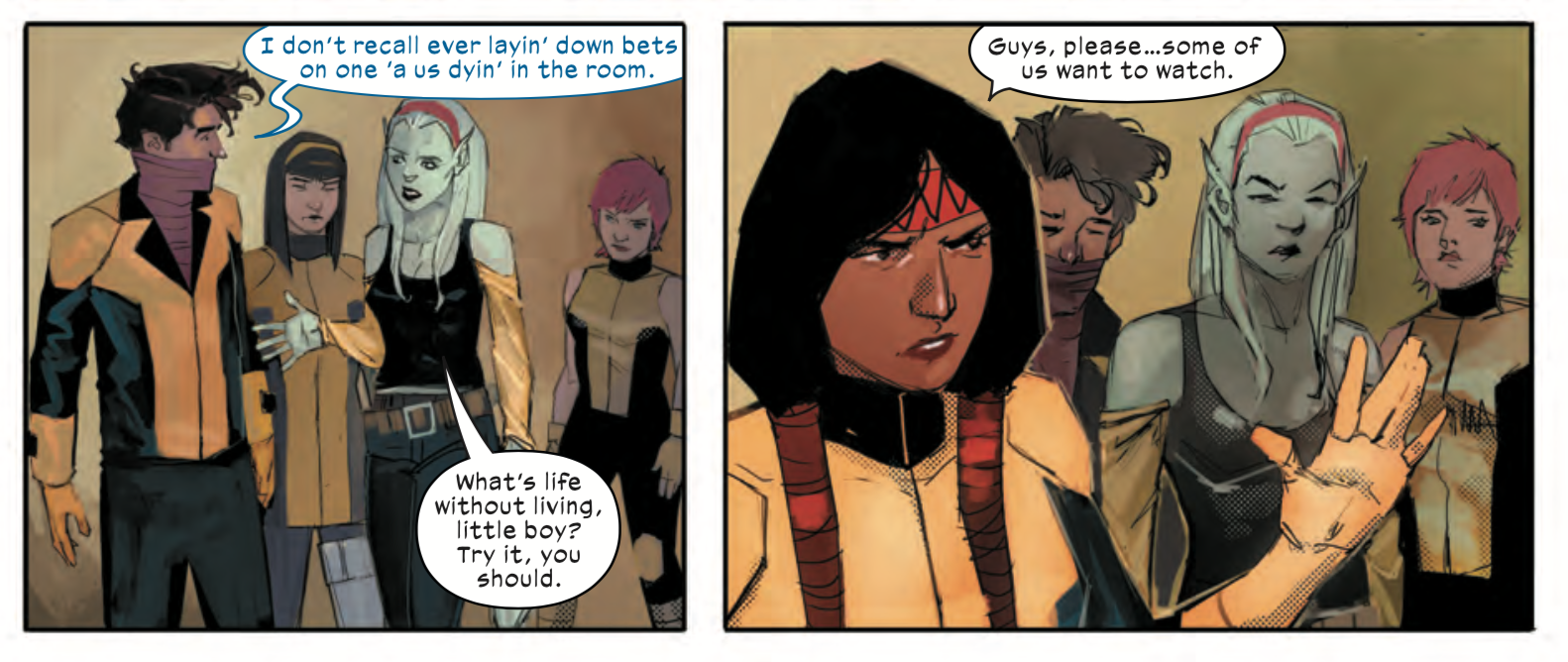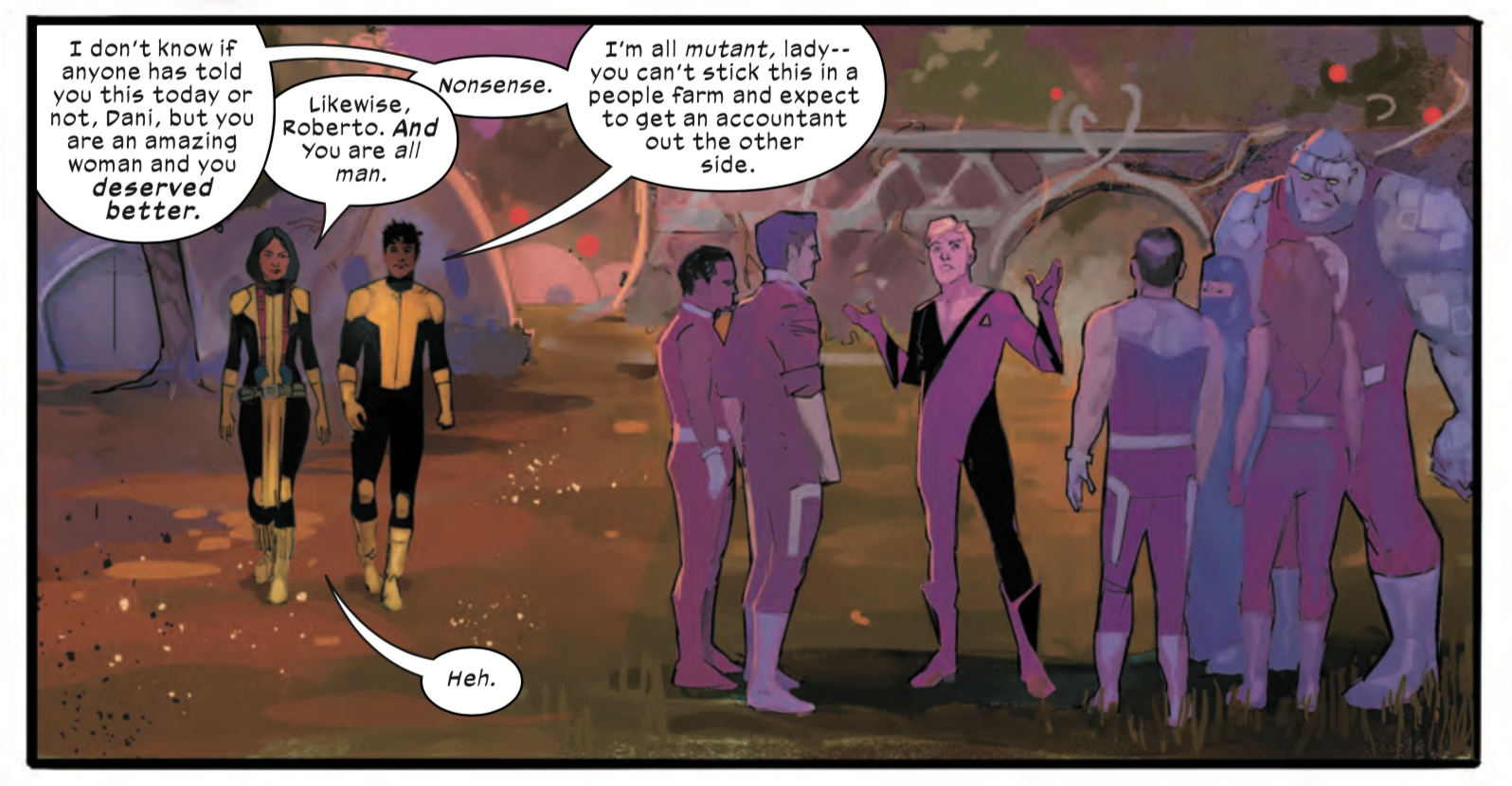The Sextant
“The Sextant”
New Mutants #1
Written by Jonathan Hickman and Ed Brisson
Art by Rod Reis
There isn’t anything disappointing about Jonathan Hickman and Rod Reis’ revival of New Mutants besides the fact that Hickman will be not be sticking around beyond the first arc, which is setting up elements of space opera plot that will blossom into something bigger for the X-Men line at some point in the future. Hickman explained in a podcast interview for SKTCHD that aside from his regular work on the primary X-Men comic, he’ll be doing brief runs on other series to tell bits of stories that are crucial to his macro-plot. This is a cool idea, but if you’re invested in the core classic New Mutants cast – Sunspot, Magik, Mirage, Wolfsbane, Cypher, Karma, Cannonball – it’s bittersweet to have a writer nail the essence of these beloved but often under-written characters and then bail so quickly. These issues are going to have to be savored.
Ed Brisson, the only X-Men writer to carry over from the pre-Hickman era, is ostensibly the co-writer of this issue, and will be the sole author of the series once Hickman wraps the opening space adventure. Brisson can be pretty good, but I don’t really notice any traces of his voice or aesthetics in this issue. The tone and script is about as Hickman-y as it gets, albeit on the more light and funny end of his spectrum. A lot of the issue is devoted to establishing ideas about where the New Mutants – and the other younger characters like the cast of Generation X and the students that populated the X-books of the 2000s – fit into the grander scheme of mutant society as the first generation of mutants plentiful enough to develop actual community, setting up plot for the Shi’ar story, and elaborating on the mechanics of Krakoa and its miraculous fauna. It’s a comic book that’s heavy on ideas, but still mostly is focused on the joy of getting to spend time with these revitalized characters. The characters are having a reunion of sorts in-story, but the more important reunion is the audience and the characters. It feels like hanging out with old friends.
The issue is packed full of wonderful character beats and genuinely witty dialogue, to the point that it feels more like a hang-out sitcom than a standard action-driven superhero comic. Hickman has fully internalized the voices of the characters as established by Chris Claremont in the 1980s, and the smallest bits of plot are enough to set the conversational dynamics in motion. Hickman lets the characters conform to their archetypes – Sunspot is vain and egotistical but extremely warm and generous, Mirage is tough as nails but very thoughtful, Magik is intense and scary – but he allows for shading and growth. This is particularly noticeable in Wolfsbane, who retains some of her classic naif qualities but is more mature and has distanced herself from her fundamentalist upbringing while still seeming idealistic and spiritual.
The star of the show is Sunspot, which should come as no surprise to anyone who read Hickman’s use of the character in Avengers. I think it’s safe to say that no one has ever loved Sunspot the way Hickman does, but in writing him, he’s certainly won many people over on the character’s charms. A lot of Sunspot’s personality could come across as grating but Hickman has a great feel for the nuances of his ego, and makes it clear that he’s a very pure and decent guy. The more arrogant elements of his character are quite cute because they aren’t fully delusional, and are the words of someone who has the raw confidence to be openly proud of his achievements. When he says a line like “I’m an amazing hero and that’s why people love me,” it just makes you go, “damn, Sunspot IS an amazing hero and that’s why I love him.” The joke isn’t that he’s not self-aware, but that he somehow lives life without much anxiety and zero imposter syndrome. What must that be like?
Rod Reis’ art in this comic is top-notch. The fundamentals are all strong – nuanced facial expressions and physicality, storytelling, compelling backgrounds – but there’s also a level of stylishness that sets his work apart. Reis, who started as a color artist, colors his own work and it seems clear that he’s thinking about color as a compositional element on the most basic structural level of his pages. The current X-Men is blessed with a lot of top quality color artists but what Reis accomplishes here is probably the most effective at conveying the somewhat alien beauty of Krakoa and signals a sense of “you are looking at something fresh and new” that backs up the more radical moves of the storytelling. This isn’t so much the case for other new X-Men titles like Marauders and Excalibur, where the artists Matteo Lolli and Marcus To deliver quality draftsmanship that nevertheless looks a bit too ordinary and “house style” for comics that are otherwise quite ambitious and forward-looking. Those books look fine, but New Mutants looks like the future.



